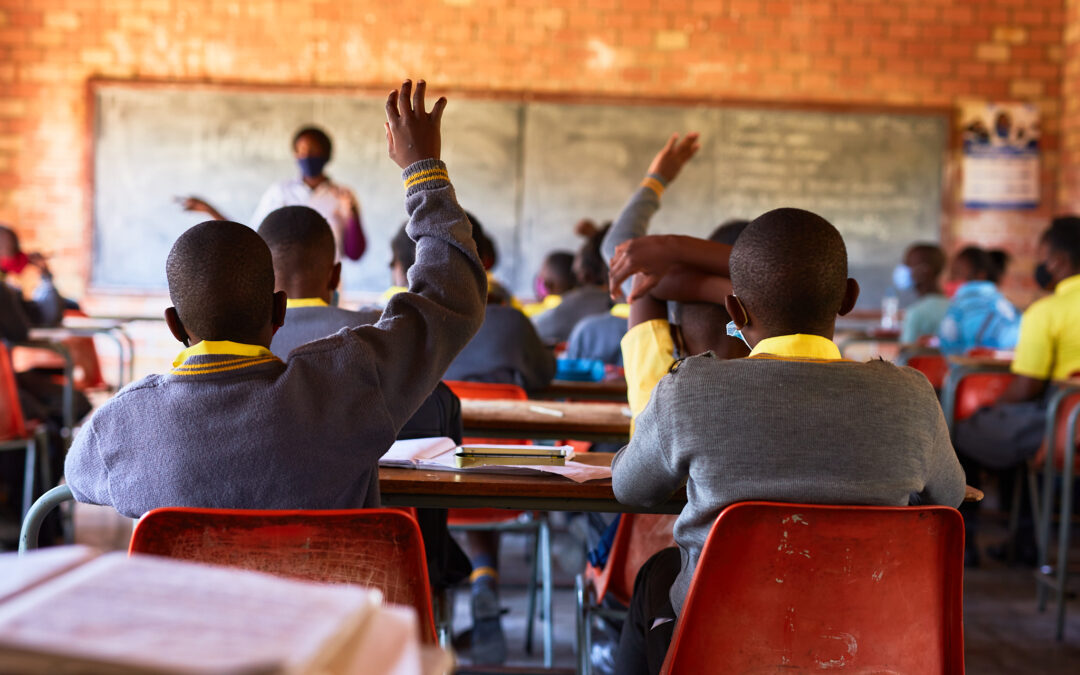Originally published on the DefeatDD blog.
While a lot of attention has been dedicated to the health and well-being of children less than five years old, the needs of older children and adolescents have been historically neglected. As a result, school-aged children often fail to access basic health services on time, leading to poor health that fuels school absenteeism, poor educational outcomes, and life-long disability and economic disadvantages. Although the period of life between five and 14 years of age is critical for physical, psychological, cognitive, and social development, children in this age group face significant health-related challenges with limited support. The COVID-19 pandemic has only intensified these challenges.
Healthy Learners partnered with the Zambian government to act on a deceptively simple idea: If children aren’t accessing healthcare, move the healthcare entry point to where more than 90% of children already are – their schools – by training the people children already trust and are with nearly every day – their teachers.
In 2011, American student Lonnie Hackett traveled to Zambia to conduct research on HIV/AIDS testing for adolescents. After several months of fact-finding and analysis, Hackett and his colleagues realized that HIV was only one of many serious health problems afflicting Zambian school-aged children.
“We realized that since this age group is not accessing healthcare, but 90% of kids are enrolled in school in Zambia, why not move the access point from clinics, which seem distant and foreign, to schools, where we have a captive audience?” said Hackett. Healthy Learners was born of this idea – a non-profit organization dedicated to improving the health of children through a model of school-based community health.
In this model, teachers are trained as School Health Workers (SHWs) and schools become an entry point for healthcare. SHWs are trained to deliver health education, promote healthy behaviors, coordinate preventive care, and respond to student health.
Teachers proactively identify sick students and refer them to a health room at the school, where they undergo a quality clinical health assessment by a SHW. Classroom teachers also monitor attendance to flag students who may be sick at home, with guardians of students contacted when there are prolonged absences. Common ailments treatment by SHWs include: diarrhea caused by infections like schistosomiasis and helminth, upper respiratory infections, and conjunctivitis.
Students are also placed in a “buddy system” to facilitate peer-to-peer mentorship and support. From inception, Healthy Learners has worked with the Ministries of Health and Education, integrating the model into the Government’s existing physical and human resource infrastructure and systems.
Healthy Learners partnered with THINKMD in January 2019 to digitize the existing paper-based diagnostic system used by their SHWs and harness technology to scale, while empowering and increasing the healthcare capacity of SHWs to provide preventive healthcare and broad integrated clinical health assessments. The assessment provides automated age- and weight-specific triage, treatment, and follow-up recommendations that comply with World Health Organization (WHO) guidelines. If necessary, a child undergoes a fast-track referral to a nearby health facility.
The model currently serves more than 280,000 students across 150 schools through 1150 trained SHWs. These children benefit from substantially improved access to healthcare, better health outcomes, and greater dedication by the school community toward their overall well-being. The model, which has an annual cost of less than $1.90 per child (equal to just 1% of Zambia’s expenditure on education for primary school children) shows a 22% increase in student’s knowledge on health, a 38% decrease in odds of illness, and a 48% increase in vitamin A supplementation and deworming coverage. In 2021, Healthy Learners and the Zambian Ministry of Education launched an expansion plan to establish the program nation-wide and serve 1 million children by 2025.
As Florence Jere, a SHW in Lusaka says, “When a child is well and in class, I get very happy.”

